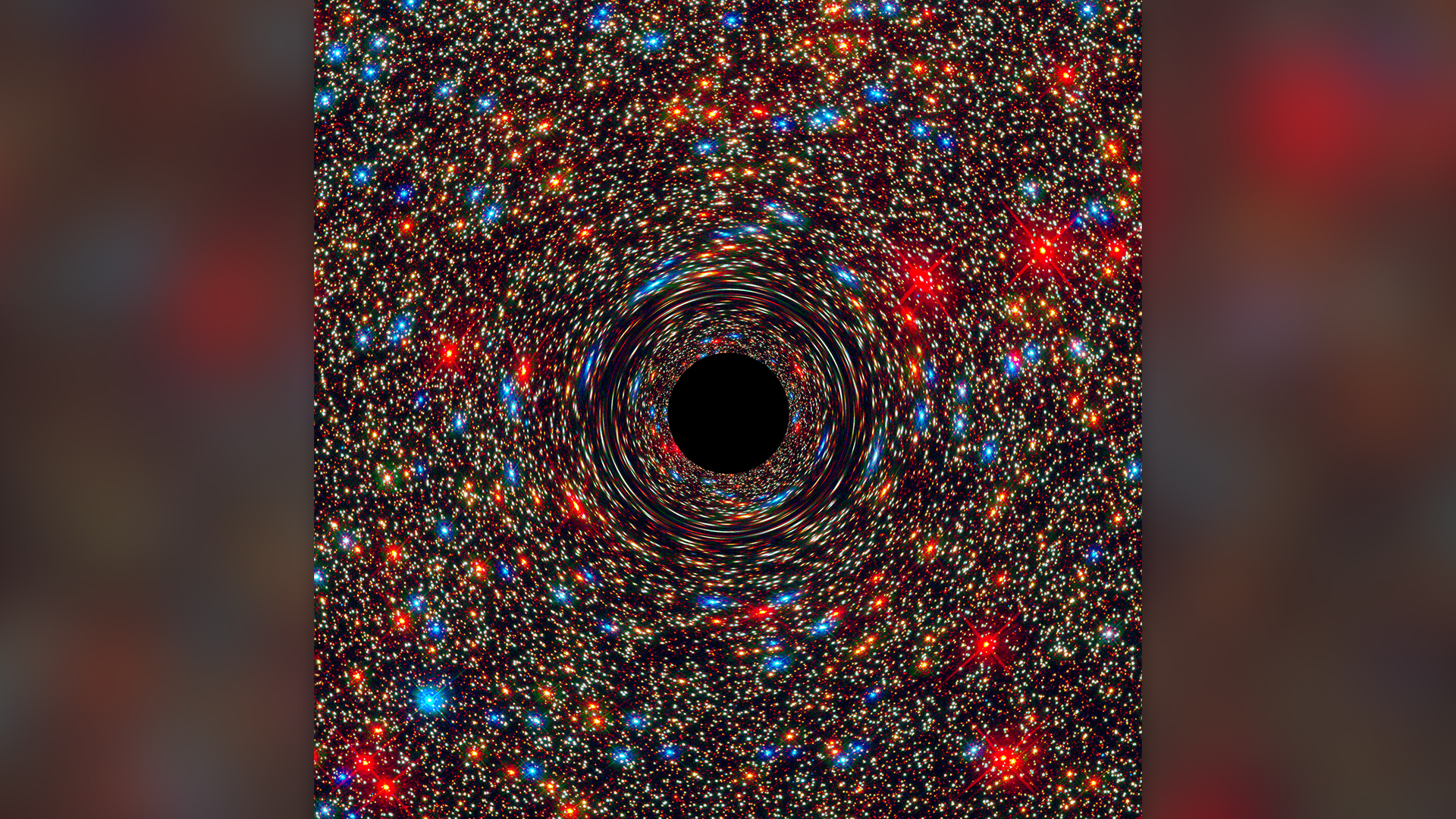
Some of the universe's oldest black holes swoop past our cosmic neighborhood at least once every decade, moving planets in their wake, a new study suggests. And if scientists can detect them, it would provide the first proof that these black holes exist as dark matter.
Black holes, regions of immense gravity that even trap light, are some of the cosmos' most bizarre objects. But arguably the strangest among them are primordial black holes (PBHs). Astronomers have hypothesized that PBHs formed when dense, hot regions of space collapsed in the second immediately following the Big Bang.
Depending on when they were born in this one-second interval, PBHs are projected to have masses ranging from a hundred-thousandth the mass of a paper clip to that of 100,000 suns. But some scientists believe that PBHs with masses between asteroids like Juno and Eros are the most important because they may be primarily made of dark matter, a mysterious material that glues components of galaxies together.
There's a problem, though. No astronomical observations have ever definitively identified black holes of this type and mass (which, despite their asteroid-like mass, are "between the size of a hydrogen molecule and the size of an average bacterium," study authors Tung Tran, Sarah Geller, Benjamin Lehmann, and David Kaiser — all researchers at the Center for Theoretical Physics at the Massachusetts Institute of Technology — wrote in a joint email to Live Science).
If such a PBH were to encounter Earth, it wouldn't destroy the planet. Yet the new study, published Dec. 28, 2023 on the preprint database arXiv, suggests PBHs should subtly affect objects in the solar system. If "a PBH flies by a planet, it starts that planet wobbling or rocking slightly around the path it was taking before the flyby," the authors wrote in the email.
That means the distances of planets from the sun — or from us — will change over time. Measuring these periodic oscillations in distance could reveal a PBH's passage.
Related: James Webb telescope discovers oldest black hole in the universe
To reach this conclusion, the researchers first calculated how closely a PBH would have to whizz past an object in the solar system to alter its movement. They found this distance could be very large — as much as a few astronomical units or AUs. (One AU is the distance from Earth to the sun.)
Using data about the positions of planets and certain moons from the JPL Horizons database (which records the positions of an additional 1 million solar system objects), the researchers performed simulations to calculate how the trajectories of the planets or moons would change, assuming a PBH with the mass of an asteroid came within 2 AUs of the sun. Over a period of years, the orbits of the planets and moons would wobble by around 1 or more inches or even several feet.
However, actually detecting these wobbles and confirming they are the result of PBH flybys will be extremely challenging. It turns out we have pretty precise measurements of how far certain celestial objects are from Earth, thanks to numerous space missions — for instance, Martian rovers have helped calibrate the Earth-Mars distance to within 4 inches (10 centimeters). But this isn't the case with other celestial bodies. The error margins of some measurements are very similar to the distances by which the planets would likely get pushed by a PBH, according to the study.
So even if the paths of such objects changed, astronomers wouldn't be able to say if it was because of an instrument error or an actual PBH. What's needed, the researchers said, are more precise simulations and higher-quality observations.







